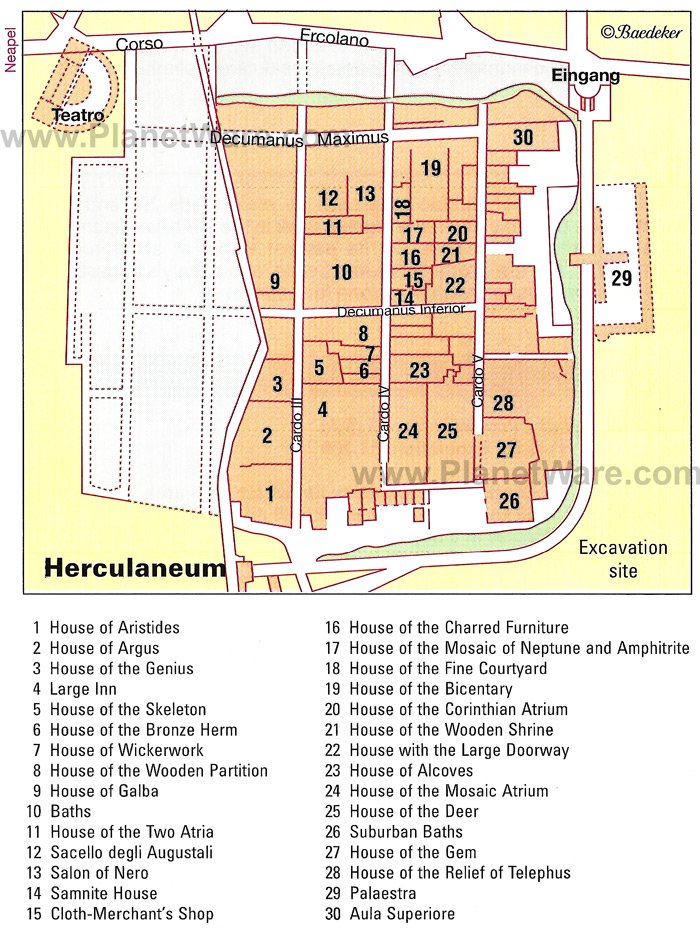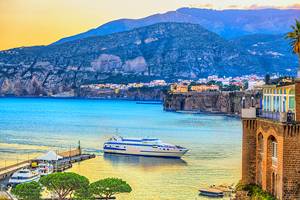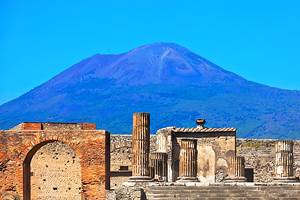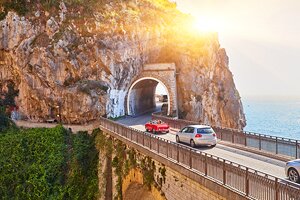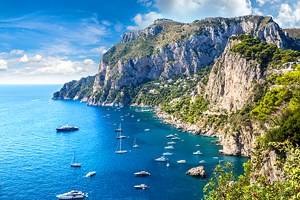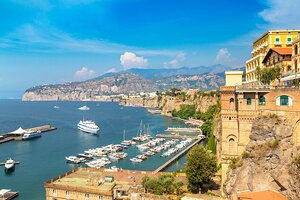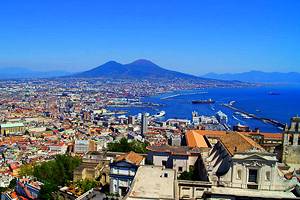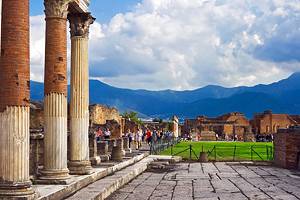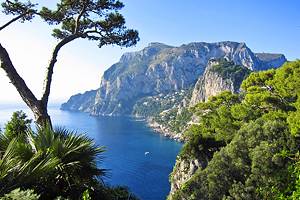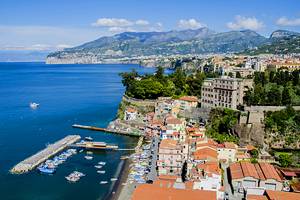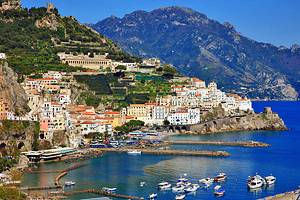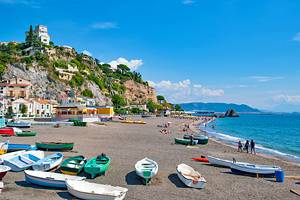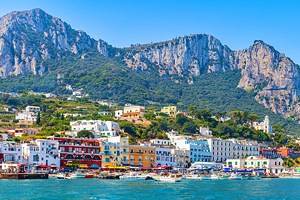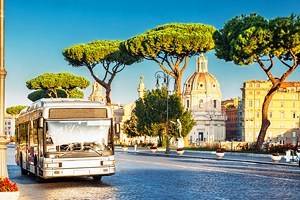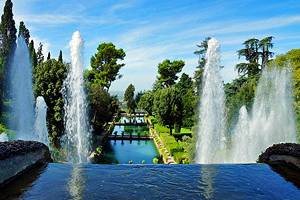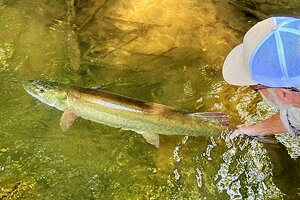Visiting Herculaneum: 13 Top Attractions
Destroyed in AD 79 by the same eruption of Mt. Vesuvius that engulfed Pompeii, Herculaneum was buried in molten lava, instead of the ash that covered Pompeii. The town of about 6,000 people lay for centuries encased in a solid mass of pumice and ash to a depth of 12 to 30 meters.
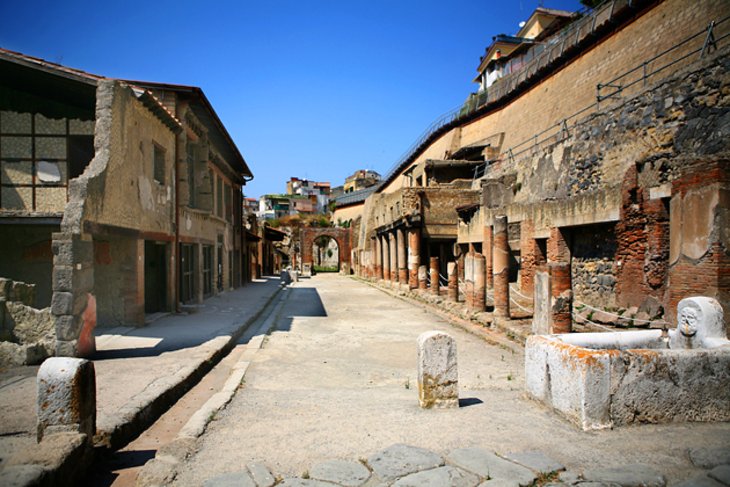
This hard, deep covering formed an airtight seal that protected it from plunderers and even from early excavation methods, saving artifacts and priceless details that have been lost at Pompeii. And unlike Pompeii, all but the very first finds and artworks have been left in their original places, not stripped for transport to off-site museums, adding to the experience of visiting Herculaneum.
In addition, instead of a sudden weight of falling ash that crushed roofs and collapsed houses in Pompeii, the fast-flowing lava filled Herculaneum from the ground up, supporting walls and roofs as it encased them. This preserved its multi-storied homes, complete with doors and staircases, as well as a wealth of organic material missing in Pompeii.
Wooden furniture, textiles, and even food and skeletons tell us much about everyday life here, and its vivid frescoes and mosaics remain intact. For these reasons, and because the site is smaller, less crowded, and the attractions are easier to explore, many tourists find visiting Herculaneum more interesting than Pompeii. The two ancient cities can be combined on a day tour from Naples, or Herculaneum is easily reached on a half-day trip from Sorrento.
See also: Where to Stay near Herculaneum
- 1. Casa dell'Albergo (Inn)
- 2. House of Galba
- 3. Sacello degli Augustali
- 4. Thermae (Baths)
- 5. Samnite House
- 6. Casa del Tramezzo de Legno (House of the Wooden Partition)
- 7. House of the Neptune Mosaic
- 8. House of the Bicentenary
- 9. Palaestra and Shops
- 10. House of the Deer
- 11. House of the Relief of Telephus
- 12. Suburban Baths (Terme Suburbane)
- 13. The Fornici
- Where to Stay near Herculaneum for Sightseeing
- Tips & Tactics: How to Make the Most of Your Visit to Herculaneum
1. Casa dell'Albergo (Inn)
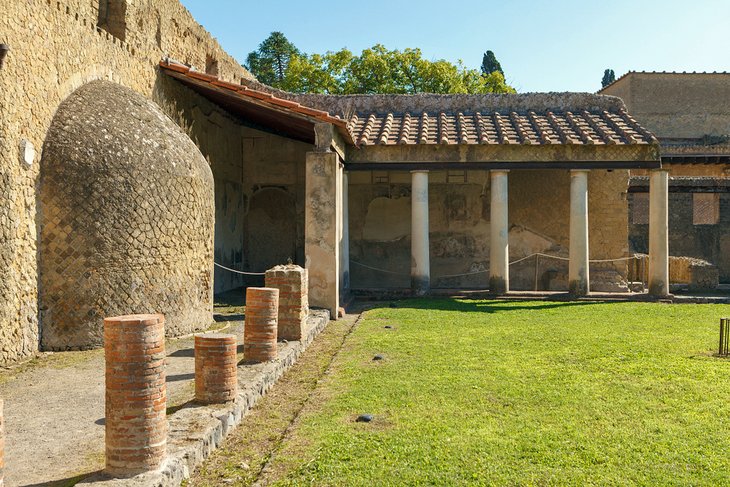
At the south end of Cardo III, which runs through an area excavated in the 19th century, Casa dell'Albergo filled almost an entire block. From the lines of columns that were once in its atrium, you can get a sense of the original size of this patrician house that was made into an inn.
Facing it on the other side of the street are the House of Aristides, a sumptuous country villa, and the House of Argus, with wall paintings and a garden with pillars. Farther along on the left is the House of the Genius, a fine patrician mansion with a garden enclosed by colonnades. Beyond the inn is the House of the Skeleton, with both wall paintings and mosaics.
2. House of Galba
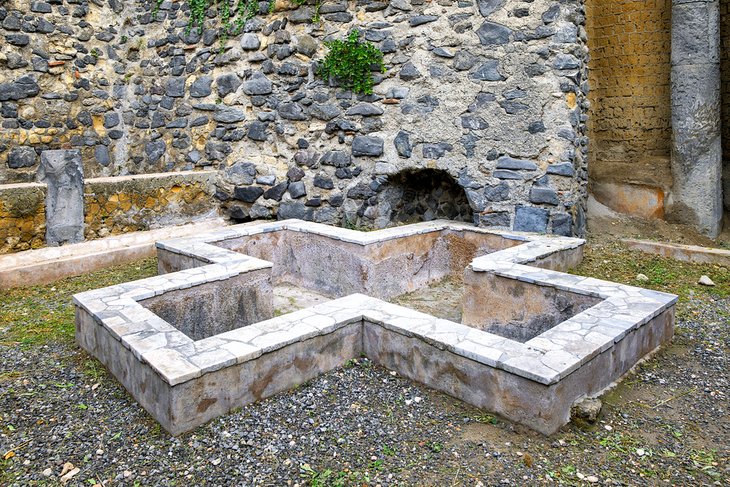
Halfway along Cardo III, the street is crossed by the Decumanus Inferior, beyond which is the House of Galba, on the left. Another fine patrician mansion, this one is interesting for its peristyle, which has a pool in the shape of a cross.
It might have been a reservoir, an ornamental fish pond, or intended for bathing, but it is unique in its shape. The area's original Doric columns were later covered in stucco. Beyond this house are more residences that are still unexcavated.
3. Sacello degli Augustali
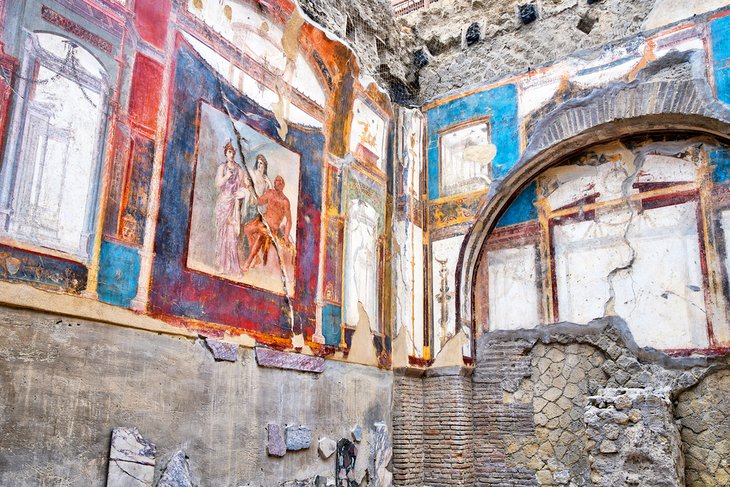
On the opposite side of Cardo III, at the end, the Sacello degli Augustali is a very large square shrine lit by an opening in the roof. It was originally dedicated to Hercules, patron of Herculaneum, for whom the town was named. It was later consecrated to the Imperial cult of Augustali, priests dedicated to the first Roman Emperor, Octavian Augustus, who was proclaimed a god after his death.
It has excellent frescoes, especially the one showing Hercules in Olympus with Juno and Minerva. Another shows Hercules fighting an Etruscan god.
4. Thermae (Baths)
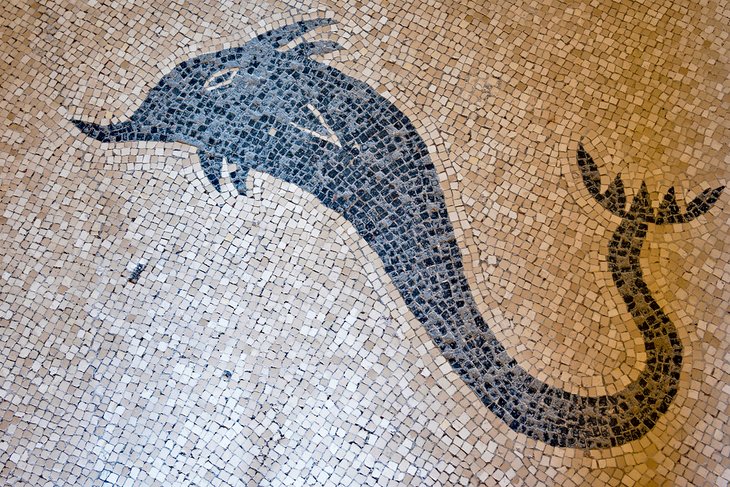
Among the more recent excavations along the Decumanus Inferior, on the left, are the well-preserved thermal baths, with separate sections for men and women. The men's domed frigidarium has a floor mosaic of dolphins, and the women's tepidarium floor, also in excellent condition, has a geometric pattern. Some of the wooden shelves are intact, as well.
Opposite the baths, across the Decumanus Inferior is the Cloth-Merchant's Shop, with a restored wooden press.
5. Samnite House
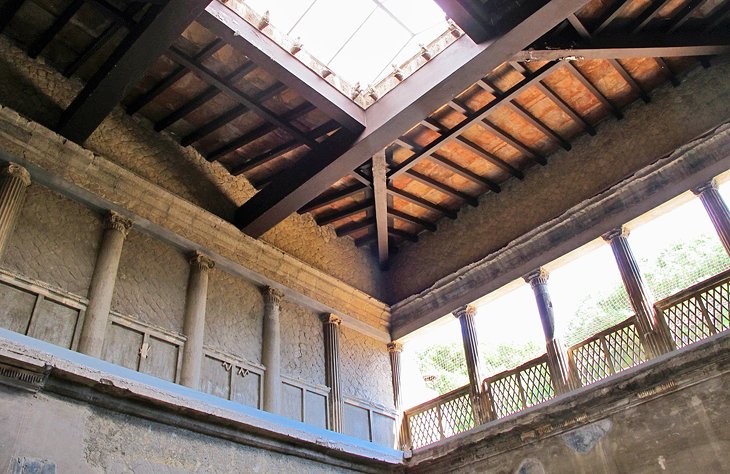
At the corner of the Decumanus Inferior and Cardo IV is the Samnite House, one of the oldest patrician mansions in the town. It was built in the second century BC, making it about 300 years old at the time of the eruption. The beautiful atrium is in the Greek style, with dramatic frescoes and a gallery lined by Ionic columns.
The atrium floors are of cocciopesto, a lime plaster mixed with ground terra-cotta, and there is a marble pool to catch rainwater. Throughout the house are rich stucco and fresco decoration. Be sure to look up to see the delicately carved tufa capitals.
6. Casa del Tramezzo de Legno (House of the Wooden Partition)
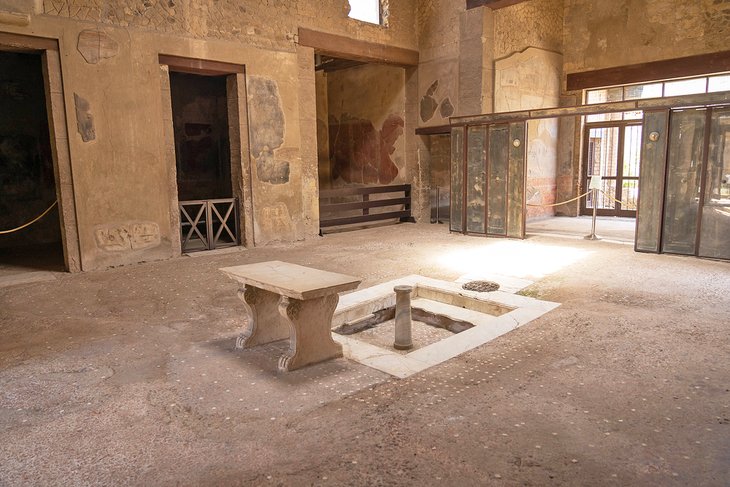
Diagonally across from the Samnite House is the House of the Wooden Partition, a patrician house of Samnite type but without a peristyle or colonnaded court. The name derives from the wooden partition that was still standing after the eruption.
The folding partition formed a wall of several hinged panels with brass handles, and was designed to give the bedrooms some privacy from the rest of the house. The bedrooms still contain bedsteads and a wooden chest. In the center of the central room is a small fountain with a marble bench.
The adjoining Casa a Graticcio was a more modest house with interior walls of wattle.
7. House of the Neptune Mosaic
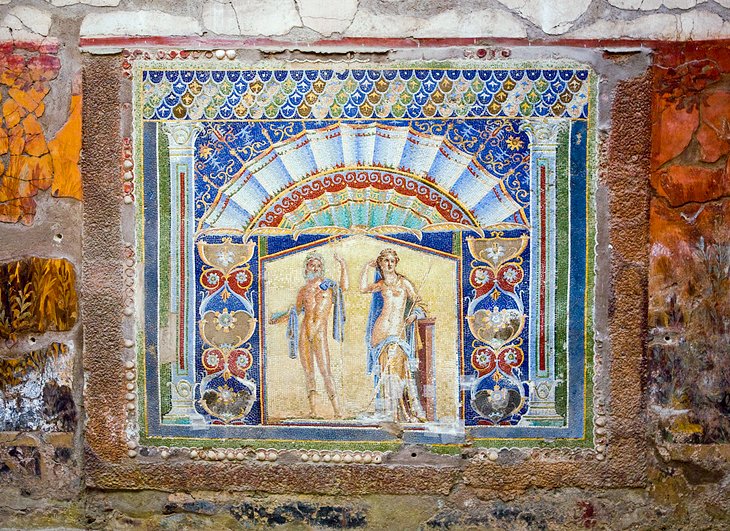
Farther up Cardo IV, on the other side of Decumanus Inferior, past the House of the Charred Furniture, is the House of the Neptune Mosaic. It is named for the well-preserved glass wall mosaic of Neptune and Amphitrite, one of a number of beautiful mosaics in this house, which evidently belonged to a wealthy family.
At the rear of the house is a courtyard with a nymphaeum, a grotto-like alcove with a fountain. On the wall beside the nymphaeum is the well-preserved mosaic of Neptune and Amphitrite, in vivid colors.
8. House of the Bicentenary
On the Decumanus Maximus, which parallels the Decumanus Inferior on the north and is still only partly excavated, the House of the Bicentenary contains one of Herculaneum's most fascinating mysteries. Stucco on a wall shows clear evidence of having once held a wooden Christian cross.
As St. Paul is known to have preached nearby, it is thought that this might have been a meeting place for early converts. If so, it may be the oldest known Christian cross. The house derives its name from the fact that it was uncovered in 1938, 200 years after excavations were started.
9. Palaestra and Shops
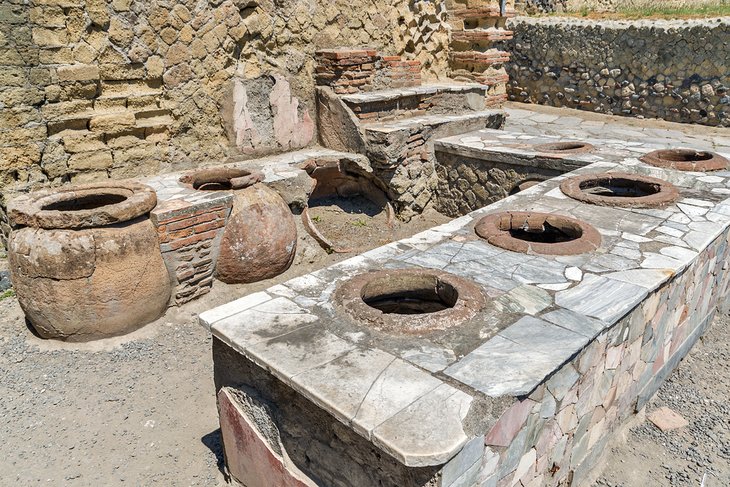
At the end of the Decumanus Maximus, Cardo V leads back past a series of shops, including a weaver's shop with looms; a dye shop with dye pots; and a bakery, in whose yard are ovens and mills for grinding grains. Also found here were bronze baking pans used for making flat bread. Along this street were a number of food shops, in which excavations turned up containers filled with walnuts and chickpeas.
The large area behind these shops was the Palaestra, a public field for games and other events.
10. House of the Deer
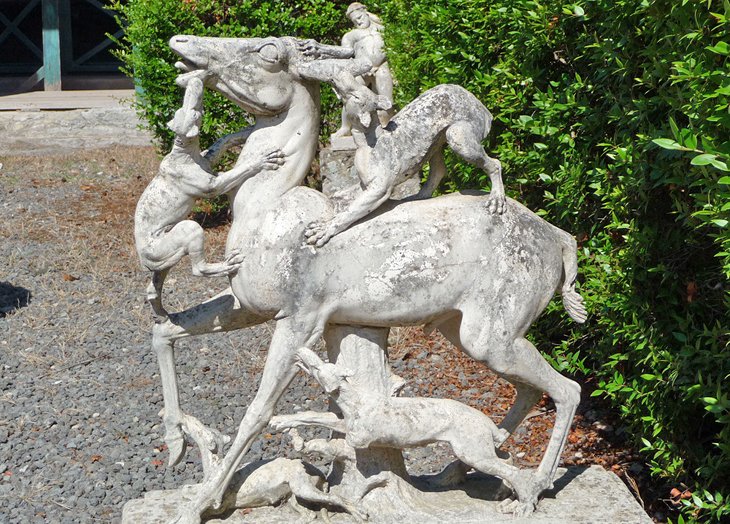
At the southern end of Cardo V, the House of the Deer was another luxury villa, with two stories built around a central courtyard. Notice especially its marble-chip and mosaic floors and frescoed walls. In the large garden, marble tables and deer statues were found, which are now preserved in the on-site museum. Marble replicas of those and other statues that were found here are displayed in the house.
Next to it is the House of the Mosaic Atrium, a spacious home with an unusual room divided into three naves, like a cathedral, the only one of its kind found here.
11. House of the Relief of Telephus
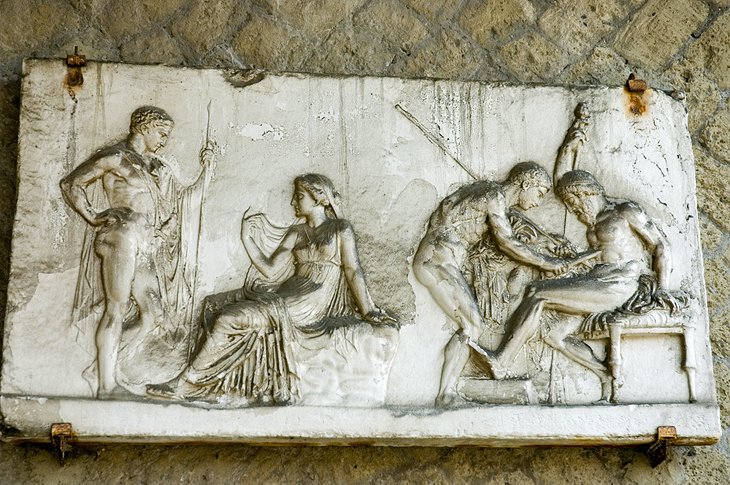
Opposite the House of the Deer, the House of the Relief of Telephus is one of the most elegant mansions in Herculaneum. In its spacious colonnaded atrium is a marble basin and a colonnade leading into the park, which sloped down to the marina.
The columns in the atrium support the upper floor of the three-story house. The original marble masks that hung between the columns have been replaced by cast replicas. The house is named for the marble relief, a finely worked piece in excellent condition.
12. Suburban Baths (Terme Suburbane)
At the edge of town near the ancient beach, the Suburban Baths are among the best preserved. Smaller than the central baths, they do not have twin facilities for men and women, so were either co-ed or used at different times.
The slate, mosaic, and marble floors; wall frescoes; and fountains are in good condition, although you can see some damage that was done by the force of the lava pouring in through the window. The House of the Gem, next to the baths, is beautifully painted in reddish-brown tones.
13. The Fornici
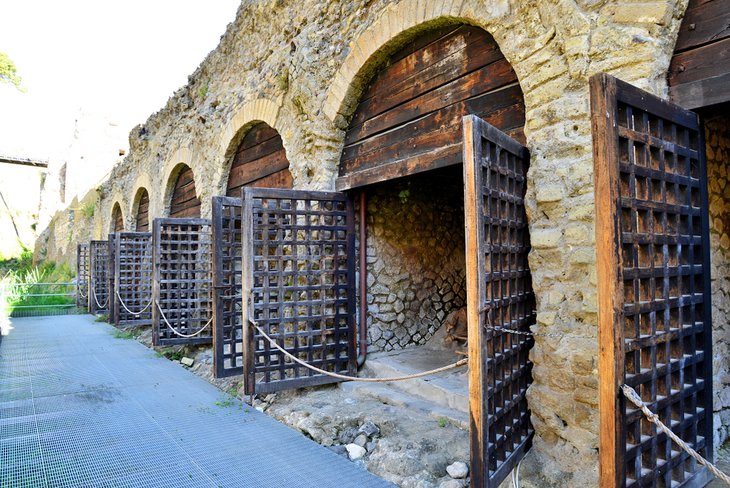
It was long believed that unlike Pompeii, Herculaneum's residents had escaped, as few human remains were evident in the town. But in 1982, further excavations at the port uncovered the skeletons of 300 people who had fled the city only to be incinerated by the sudden blast of extreme heat.
Perhaps the most dramatic sight in Herculaneum is at the Fornici, the warehouses at the port where boats were also kept. Fleeing the eruption, Herculaneum residents rushed here hoping to escape by boat, only to be enveloped by clouds of toxic smoke and volcanic ash before they could get away.
Along with the human skeletons, the Fornici excavations found the treasures these people hoped to save, including jewelry and coins, and a Roman ship nine meters long was found.
Where to Stay near Herculaneum for Sightseeing
- Il San Cristoforo: Although it's a bit out of the center, this top-rated hotel offers a free scheduled shuttle to the railway station and archaeological site. The advantages of staying in this location are the spacious park-like grounds and gardens that surround the modern hotel, and the views of Mt. Vesuvius from some of the luxurious rooms. Breakfast and parking are free and there is a swimming pool.
- Andris Hotel: Also out of town and in the same price range, Andris Hotel is convenient if you're traveling by car. The peaceful location has views of Mt. Vesuvius, and rooms are spacious.
- Hotel Villa Signorini: In the same moderate price range, and a five-minute walk from the archaeological site, Hotel Villa Signorini occupies an 18th-century villa with an old-world atmosphere; breakfast and parking are both included.
- Hotel Herculaneum: This budget-friendly hotel is opposite the archaeological site and close to several restaurants. An excellent breakfast is included, and there are family-sized rooms. It's a five-minute walk from the train station.
- Ruins B&B: Sharing a reception area in a convenient location with the Hotel Herculaneum, Ruins B&B has budget-wise rooms, some with private terraces. Directly opposite the gates of the ruins, it is also at the stop for the minibus to Mt. Vesuvius. Breakfast is included.
Tips & Tactics: How to Make the Most of Your Visit to Herculaneum
- Tours of Herculaneum: A four-hour Herculaneum Tour from Sorrento provides round-trip transport by air-conditioned coach from your hotel in Sorrento and a tour of the ancient city led by an expert local guide. The two ancient cities can be combined on an eight-hour Pompeii and Herculaneum Day Trip from Naples, which includes round-trip transportation, a guided tour of Pompeii, a typical Italian lunch, and plenty of time to explore Herculaneum.
- For Your Comfort: Although there are quite a number of houses and other buildings to see in Herculaneum, these are much closer together than at Pompeii. Even so, expect a lot of walking on rough surfaces. Comfortable shoes are highly recommended. You'll find luggage storage at the ticket office.
- Getting Here on Your Own: The Circumvesuviana trains connect Naples and Sorrento, with two stops in Herculaneum. The Ercolano Scavi stop is a 10-minute walk from the entrance to the excavated area. There are shuttle buses, but unless there is a bus just loading, it's usually faster to walk.
- Address: Corso Resina, Ercolano NA, Italy
More Related Articles on PlanetWare.com
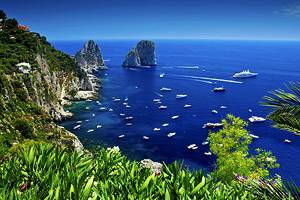
Where to Go from Herculaneum: Just a short drive or train ride away, the lovely town of Sorrento makes a good base for taking a ferry to the lovely island of Capri. It's also a good starting point for seeing the attractions of the Amalfi Coast.
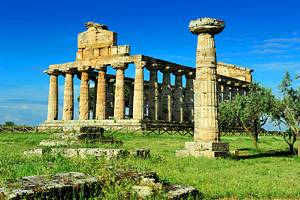
Exploring More Ancient Cities: If Herculaneum whets your appetite for more sites of the ancient world, begin with the other city destroyed by the eruption of Vesuvius in AD 79, using our page on Visiting Pompeii as a guide to the top sights. Not far south of the Amalfi Coast on the Gulf of Salerno are the well-preserved remains of the Greek city of Paestum, later occupied for 1,000 years by the Romans.
